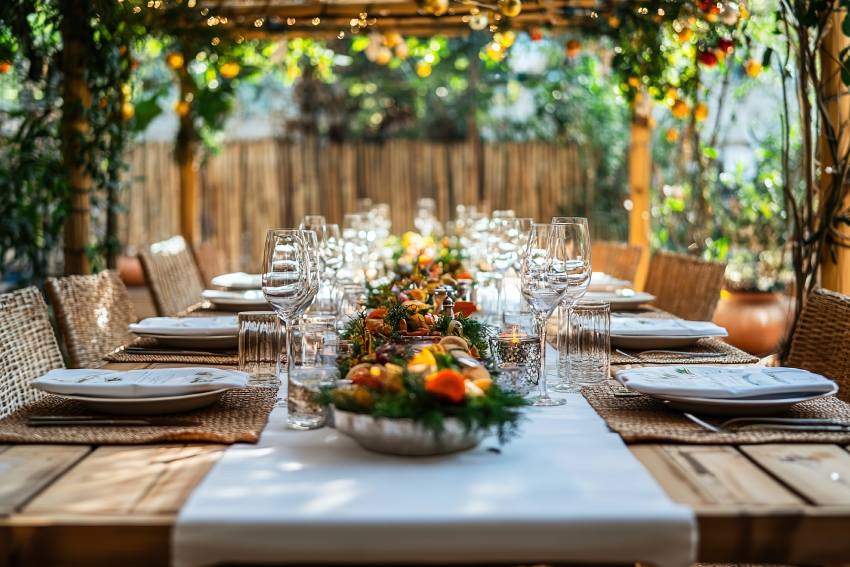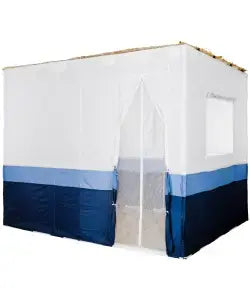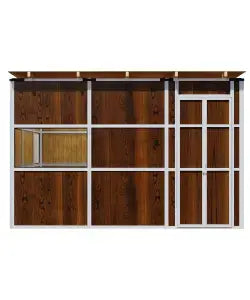What is the Holiday of Sukkot? (Succos for Ashkenaz pronunciation)

So you’re curious to understand the holiday of Sukkot. This isn't just another Jewish holiday that gets a brief mention in your calendar app—it's actually one of the most hands-on, experiential celebrations you'll find in any religious tradition.
What is Sukkot?
Let's start with the basics. Sukkot (pronounced "soo-COAT" or "SOOK-oat," depending on who you ask) is a seven-day Jewish festival that typically falls in September or October. The name literally means "booths" or "huts" in Hebrew, which gives you a pretty big clue about what this holiday involves.
Think of it as the Jewish version of camping, but with deeper meaning and better food. During Sukkot, observant Jews build temporary outdoor structures called sukkahs and eat their meals inside them. Some even sleep in these makeshift shelters, weather permitting.
The holiday commemorates the 40 years the Israelites spent wandering in the desert after leaving Egypt, when they lived in temporary dwellings and relied on divine protection. But it's also a harvest festival—a time to celebrate the bounty of the earth and express gratitude for what we have.
What Happens During Sukkot?
Here's where things get interesting. What happens during Sukkot isn't just about sitting in a hut for a week. The holiday comes with its own set of rituals and traditions that make it unique among Jewish celebrations.
The most obvious activity is building and dwelling in the sukkah itself. Families spend time constructing these temporary structures, decorating them with fruits, vegetables, and colorful ornaments. The roof must be made of natural materials like palm fronds or bamboo—called schach—that provide shade but still allow you to see the stars.
Then there's the ritual of the Four Species (arba minim): a palm branch (lulav), citron (etrog), myrtle branches (hadassim), and willow branches (aravot). These are bound together and waved in six directions during prayers, symbolizing God's presence everywhere.
Daily prayers take on special significance during Sukkot, with additional readings and songs. Many communities organize sukkah tours, where families visit each other's temporary dwellings to admire the creativity and craftsmanship.
How Long Does the Sukkot Holiday Last?
The sukkot start time varies each year because it follows the Hebrew calendar, but it always begins on the 15th day of Tishrei (usually in late September or early October). The festival lasts seven days in Israel and eight days in most other countries—a difference that stems from ancient uncertainties about when exactly the new month began.
But here's where it gets a bit complicated: Sukkot doesn't end cleanly after seven or eight days. It's immediately followed by two related holidays: Shemini Atzeret and Simchat Torah. So when people ask what time does sukkot end, the answer depends on whether you're talking about the sukkah-dwelling period specifically or the entire holiday season.
In practical terms, you'll be eating in your sukkah for seven days, but the celebratory mood continues for a few more days after that. How long does sukkot last in total? If you count the associated holidays, you're looking at about nine or ten days of festivities.
Overview of the History of Sukkot
The history of Sukkot stretches back over 3,000 years, making it one of the oldest continuously observed holidays in the world. It's mentioned multiple times in the Hebrew Bible, where it's called one of the three pilgrimage festivals (along with Passover and Shavuot) when ancient Jews would travel to Jerusalem.
Originally, Sukkot served a dual purpose: commemorating the Israelites' desert journey and celebrating the fall harvest. This agricultural connection explains why the holiday is also known as Chag HaAsif (Festival of the Ingathering) and why traditional decorations include fruits and vegetables.
During the Temple period in Jerusalem, Sukkot was marked by elaborate water-drawing ceremonies and massive celebrations that the Talmud describes as so joyous that "whoever has not seen the rejoicing at the place of the water-drawing has never seen rejoicing in his life."
After the Temple's destruction in 70 CE, the holiday evolved but maintained its core elements. Medieval Jewish communities across Europe, North Africa, and the Middle East adapted Sukkot traditions to their local climates and customs, creating the rich variety of practices we see today.
The modern celebration of Sukkot reflects this long history while adapting to contemporary life. Whether you're in Brooklyn or Buenos Aires, the basic elements remain the same: temporary dwellings, special prayers, festive meals, and a focus on gratitude and divine protection.
Ready to build your own sukkah for this meaningful holiday? At Sukkah Market, we offer everything from custom sukkah designs to detailed sukkah building instructions. Whether you're looking for a sukkah for sale near me or need to contact Sukkah Market for personalized guidance, we're here to help make your Sukkot celebration memorable. Understanding what is Sukkot Day is just the beginning—experiencing it in your own sukkah is where the real meaning comes alive.







